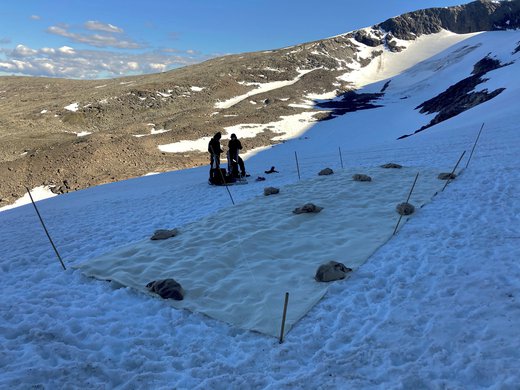The unprecedented threat posed by the COVID-19 pandemic has forced unprecedented responses, not least in Canadian border security management. Faced with the surging Omicron variant, the government of Canada is once again advising against non-essential travel.
But whatever happens in this latest COVID wave, the time has come to assess the effects of prolonged limits on cross-border movement. Clearly, Canada needs better border strategies to confront emerging threats to Canadian security.
A recent report from the Wilson Center Task Force on Public Health and the U.S.-Canadian Border provides welcome insights about the consequences, both good and bad, of border security measures during the pandemic. The grave economic repercussions of prolonged border closure are themselves a threat to Canadian security, which could have been more effectively minimized as researchers learned more about the disease. The incoherence of Canadian and US border policy also created needless uncertainty.
Our own report on Canadian border security, recently published by the Centre for International Governance Innovation, details some of the lessons learned during the pandemic, while turning an eye to future threats.
For the past two years, COVID-19 has exclusively commanded public and government attention, and health security will remain the overriding objective of border policy for the foreseeable future. However, we must not be blinded to the more gradual trends that are creating unexpected border security threats and profoundly reshaping the manner in which Canada’s border is managed.
Canada has always benefited from its geographic position in the world: surrounded on two sides by immense oceans, one side by the untraversable Arctic, and having only a single land border with our historically amicable southern neighbour. We have been spared most of the costs of border vigilance which other countries take for granted.
This good fortune should not lead to complacency. As a result of rapid changes in technology and climate, it’s clear that Canada’s geography will not grant the same level of protection in the future.
Global temperatures are predicted to increase over the next century, and this effect will be felt most keenly in the Arctic. The melting of Arctic Sea ice will open up previously inaccessible territories. New bounties of fossil fuels and other resources will become exploitable for the first time. The Northwest Passage may become a viable route for international shipping. The benefits are obvious, but greater accessibility will also transform the Arctic into another “border region” as foreign powers, including Russia, China and the United States, seek to stake a claim on resources and dispute Canada’s sovereignty over shipping lanes. To contend with these challenges, Canada will need to improve the region’s underdeveloped physical and digital infrastructure.
As a result of rapid changes in technology and climate, it’s clear that Canada’s geography will not grant the same level of protection in the future.
Further afield, climate change will reduce the habitability of marginal lands. As subsistence living becomes more precarious and political instability is exacerbated by scarcity, global refugee flows will only grow.
Another long-term trend altering Canadian border security is technological development. Border control strategies premised on managing the physical movement of goods and people are struggling to contend with increasing digitization. Intangible assets like data can cross borders undetected with passengers or cargo and can also effectively transit national boundaries without ever interacting with physical borders.
Digital content, cryptocurrencies, and 3D printing blueprints can easily flow in and out of Canada — in contravention of our laws or the spirit of them — and potentially cause great harm to Canadians. This is a matter that exceeds the current capabilities of Canada’s border services agency and even the Government of Canada. It will require greater international cooperation to address in the years ahead.
While novel technologies will prove difficult targets for border controls, the use of emerging technologies as a tool of border management also presents its own host of troubling “opportunities.” The temptation will exist to improve border security by deploying technologies such as artificial intelligence applications including facial recognition and other solutions that require the personal data of citizens.
Balancing security requirements with respect for citizens’ rights, especially privacy, will be integral to successful technology adoption. Their use should also be publicly disclosed unless doing so would compromise national security.
Simply put, the speed of technological invention has outpaced law making. What is desperately needed now is for the government to provide clarity on the acceptable use of technologies in border security. Central to this policy innovation must be resolving the legal ambiguity surrounding the methods of the search and seizure of digital assets that cross our border, as data often resides in the cloud hosted in other countries.
Canada’s security strategy has not had a serious rethink since 2004 and was heavily shaped by the events surrounding 9/11. A new strategic vision for the border must be part of a broader policy discussion around an updated, modernized national security plan, and it must not be monopolized by the experience of COVID-19. If we continue to operate without greater foresight at the border and beyond, we can expect to be caught flat-footed again, as demonstrated by our experiences with the pandemic. Although this is when our border issues became glaringly obvious, technological and environmental impacts on Canadian security may be graver than the inconveniences caused by the coronavirus.
This article first appeared in the Hill Times.



